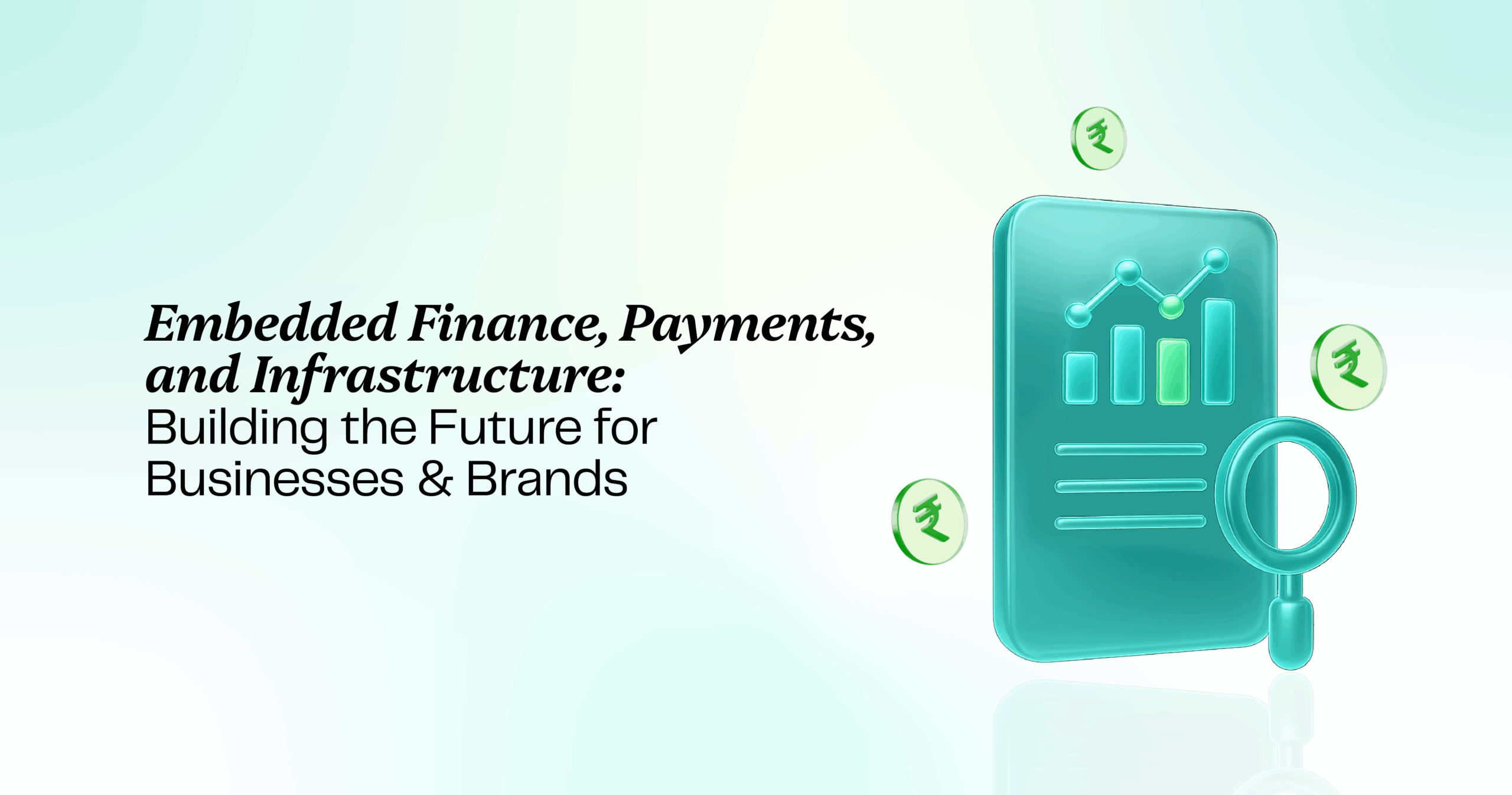Today, we announced the acquisition of Setu, a company that has been consistently raising the bar on innovation in the world of payments and financial services.
Read the press release here
Fintech today is everywhere, all eyes are on fintech companies as they usher in the next phase of growth in our ambitions to be a digitally empowered nation. We have seen the evolution of online commerce and the rise of contextual commerce where consumers today can seamlessly make purchases while watching a video or browsing social media. The same is expected to happen in payments and financial services, as experiences get embedded into everyday journeys.
Businesses of all sizes and shapes will want to build and incorporate these financial services and products into their customer journeys. Products and offerings that were previously standalone, and complex to use will be broken into smaller parts, with cleaner code. Businesses will look for a simple and easy-to-use technology stack to build these services into consumer journeys, as well as their own workflows.
As the use of real time payments and clean APIs grows, this disaggregation, unbundling, and repackaging of financial services will represent the single biggest revolution in fintech.
We at Pine Labs are committed to leading this revolution. Our focus has always been on building cutting-edge fintech products. With the acquisition of Setu, we continue to invest in this vision and welcome an exceptionally strong product and engineering-first company to our ranks.
In this blog, we’ll cover:
- Embedded finance as a global trend shaping the future of fintech
- How digital infrastructure and the ‘India Stack’ will drive innovation
- Plural and Setu: A true ‘plurality’ of offerings for our consumers
Embedded finance as a global trend shaping the future of fintech
Embedded finance refers to the inclusion of financial services, tools, and offerings into a traditionally non-financial user experience or platform. This stems from the underlying consumer need for convenience and control.

A few examples:
One-click checkout: The one-click experience is one of the earliest forms of embedded finance. Consumers could complete their shopping experience without having to engage with their financial instrument (i.e., no credit card details entered, no SMS OTP, etc).
Embedded insurance: Some examples:
- Bundled phone insurance with a new phone purchase
- Event insurance at point of checkout with a concert or event ticket
- Optional insurance coverage offered to passengers in ride hailing apps (e.g. Uber) – with a nominal insurance premium based on driver rating, car safety features, etc.
According to a July 2021 study by Juniper Research, the global embedded finance market could exceed $138 billion by 2026. Here are a few underlying trends that will fuel this:
A. Soaring consumer demand: The core underlying driver will be demand from consumers for convenience and simplicity in their online journeys.
Share of consumers that are likely to sign up for the following embedded finance products (source: Tummplatform.com):
- Insurance on items like phones and holidays (44%)
- BNPL options (42%)
- Loans for high value items (39%)
B. New and emerging business models, demand from fintechs and banks alike:
82% of banks surveyed in the United States recognize embedded finances as a new revenue stream. While 63% of banks currently do not offer these products, 31% of banks surveyed plan to have these services ready in six months.
C. Evolving regulatory standards: Both market-driven and regulatory-driven open banking frameworks are seeing adoption across the globe. Against a clear regulatory backdrop, market participants have been encouraged to further innovate in the space.

(Source: http://www.openbankingmap.com/)
D. New technologies and platforms, and the proliferation of APIs: Perhaps the most striking trend is the mammoth interest in API-first development. Using Postman’s API collection usage as a proxy – we can see massive growth in the space. Postman’s 2021 State of the API report showcased massive growth in Postman’s own API Collections – with Postman users making 855 million API requests (up 56% YoY).
How digital infrastructure and the ‘India Stack’ will drive innovation
The ‘India Stack’ has succeeded in laying the foundations of e-infrastructure that will promote financial inclusion and enable digitization of services. We believe it is still early in the evolution of the stack, but the results so far truly speak for themselves – and indeed the success of UPI has been a blueprint for emerging and developed markets the world over.

(Source: https://indiastack.org/)
Evolution of the India Stack

This is also why we are particularly excited to partner with Setu. Setu has been an early innovator in the space. Examples include the beautiful experiences that have been built for Bharat Bill Payments System (BBPS) BillPay, and the early work on customer journeys around the Account Aggregator (AA) framework.
Plural and Setu: A true ‘plurality’ of offerings for our customers
On the acquisition of Setu, Tanya Naik, Head of Online Business (Plural) at Pine Labs, said “For us, working with Setu now truly signifies the meaning of plurality in terms of our offering consumers. Our ambitions for Plural are clear, we are here to create the payments infrastructure and services platform of the future. And while we solve for complex payments problems and business workflows, the world of financial products beyond payments needs to be reimagined too. In fact, we are already working on what our joint offerings could look like – and feedback from customers has been very positive”
As of May 2022, Plural achieved a record monthly GTV of INR 2000 Crore. This is on the back of increased volumes from some of our existing customers, including CRED, Croma, Samsung as well as new customers like Housing.com and Magic Bricks coming onboard. Together with Setu, we will now offer services well beyond ‘traditional’ payments acceptance. Some examples include enhancing the customer experience (Aadhar E-Sign, Income verification, KYC), widening our payment product suite (BBPS Bill Collect, BBPS BillPay, UPI Deep links), superior banking and payouts services (Vendor Payouts, Fixed deposits, and more).
At Pine Labs we are thrilled about the building the future of fintech in India, and welcome Team Setu on this journey with us. Watch this space!
(This blog is co-authored by Varun Varma, Swapnika Pervela & Amrita Konaiagari)
Sources of information for this post, and other resources on embedded finance:
“Embedded Finance Market Value to exceed $138 Billion in 2026”
“Banks Racing to Meet Consumer Demand for Embedded Finance”
“What the embedded-finance and banking-as-a-service trends mean for financial services”
“Why embedded finance is critical to Southeast Asia’s digital future”

